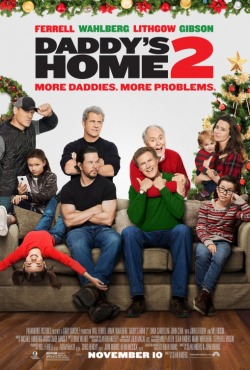Last Flag Flying
Another interview with director Richard Linklater about his career, the pivot to a story that’s outside of what he usually tells and more.
Detroit
The movie is returning to theaters in select markets around the time it hits home video and there’s a new trailer for that release that hits some very different emotional and narrative beats than were seen in the original campaign.
Lady Bird
More conversations with writer/director Greta Gerwig about the path she took to making this movie as well as with the costume and production designers about creating the look of the movie.
Costar Beanie Feldstein, who plays the title character’s friend in the film, is getting more and more attention now that it’s in theaters, including this profile and interview. And Tracy Letts, who plays the out-of-work father, talks here about how quickly he was attracted to the script and to working with Gerwig.
Thor: Ragnarok
Director Taika Waititi talks here about how he got the rights to Led Zeppelin’s “Immigrant Song,” and thank goodness he did considering how well it plays in the trailer.
Jeff Goldblum explains how he got involved in such a grandiose film and how he worked with Waititi to create a colorful and memorable character.
I don’t think I included this late-breaking trailer in my recap but it’s lots of fun, in no small part because of some cool Valkyrie sequences.
Daddy’s Home 2
Will Ferrell made appearances on late night TV, though as usual those were centered more around his antics than the movie itself.
A great piece here on the fact that Mel Gibson has apparently been totally forgiven by Hollywood (and likely audiences) without really doing anything.
Novitiate
Melissa Leo talks more here about how she took on the role of the Reverend Mother with additional comments from writer/director Maggie Betts on the actress and the character she plays.
Murder on the Orient Express
Not that surprisingly, the costume design for the highly-stylized film has finally received some press attention along with the production design.
Kenneth Branagh talks here about how he updated the story a bit to make it a bit more relevant and accessible for the audience.
Wonder
Lionsgate worked with Jigsaw, part of the Alphabet network of companies, to create a Chrome extension that finds offensive or inflammatory comments and replaces them with messages of kindness. I’m not quite sure I get how that doesn’t cross over into “creepy censorship,” but whatever.
Julia Roberts spoke here about walking the line of sentimentality in the story.
That Facebook Messenger bot I was unsure of a few days ago was what I expected it to be, a platform for people to message the page and receive an inspirational message in return. You can see a video promoting the chatbot, created by imperson, here.
Justice League
Finally, here’s the kind of profile of Gal Gadot that I was hoping to see earlier in the campaign.
Jeremy Irons did a bit of late-night TV to talk about playing Alfred in such a massive production.
Get Out
Jordan Peele has not only responded in his own way to the movie’s categorization as a comedy by the HFPA but also crashed a college course that was discussing the film.
Chris Thilk is a freelance writer and content strategist who lives in the Chicago suburbs.








